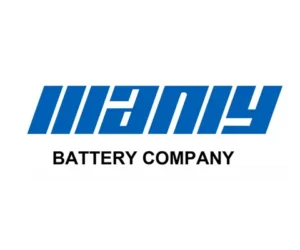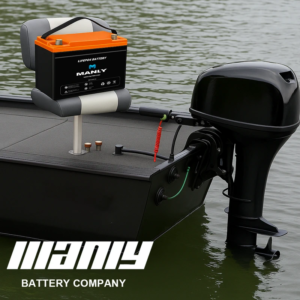Posso caricare una batteria al litio con un normale caricabatterie
Sommario
- Posso caricare una batteria al litio con un normale caricabatterie
- Scegliere il giusto caricabatterie per batterie al litio: comprendere le differenze di ricarica tra batterie al litio e SLA
- Come le batterie al litio rispondono a un profilo di ricarica SLA
- Un caricabatterie SLA potrebbe danneggiare una batteria al litio?
- Posso caricare una batteria al litio con un alimentatore?
- Conclusione
- Ulteriori informazioni sulla batteria

Scegliere il giusto caricabatterie per batterie al litio: comprendere le differenze di ricarica tra batterie al litio e SLA
Understanding how lithium batteries and SLA batteries absorb charge is essential when choosing the right type of caricabatterie per batterie al litio. I profili di carica di queste batterie differiscono in modo significativo. Le batterie SLA seguono in genere un processo in tre fasi: corrente costante, tensione costante (chiamata anche fase di assorbimento) e carica di mantenimento. Al contrario, i caricabatterie per batterie al litio funzionano con solo due stadi: corrente costante e tensione costante.Processo di ricarica della batteria SLA
For an SLA battery, the first stage is the constant current phase, where the battery receives most of its charge. For example, a 12V 20Ah SLA battery may take around 3-4 hours to reach 80% of its total charge capacity. Once this level is reached, the process shifts to the constant voltage or absorption stage. This stage completes the final 20% of the charge but can take as long as the first stage, making up about 50% of the total charging time. The final stage, float charging, keeps the battery at full charge to prevent self-discharge. While this helps maintain the battery’s lifespan, it also extends the total charging time.Perché la batteria al litio si carica più velocemente
Charging a lithium battery is much simpler and quicker. With a lithium battery charger, the first stage (constant current) brings the battery up to 99% of its charge. The remaining 1% is topped off in the second stage, constant voltage, which is much shorter than the absorption stage used for SLA batteries. This streamlined process means lithium batteries can be fully charged up to three times faster than similar-capacity SLA batteries.For example, a 12.8V 20Ah lithium battery can reach almost full capacity in about 2.5 hours, compared to over 6.5 hours for an equivalent SLA battery. This rapid charging capability makes lithium battery chargers a popular choice for applications like golf carts, marine systems, and backup power solutions, where minimizing downtime is essential.I profili di tensione sono importanti
One key difference between SLA and lithium batteries is their voltage profiles. A fully charged 12V SLA battery typically reaches around 12.7V, while a lithium battery can reach up to 13.4V when fully charged. This narrow voltage range in lithium batteries means that using a standard SLA charger can lead to either overcharging or undercharging. To prevent these issues, you need a universal lithium battery charger that is specifically designed to meet the precise voltage requirements of lithium batteries.The best way to charge lithium batteries is to use a dedicated li ion battery charger that follows a CC/CV (Constant Current/Constant Voltage) charging algorithm. This ensures the battery is charged safely and efficiently. Unlike SLA chargers, which may continue to trickle charge, a lithium battery charger stops charging as soon as the battery reaches full capacity, preventing potential damage from overcharging.Come le batterie al litio rispondono a un profilo di ricarica SLA
One common question many people have is whether a lithium battery can be safely charged using an SLA (Sealed Lead Acid) charger. The short answer is: Yes, but there are conditions. To understand why, it’s crucial to look at how lithium batteries absorb charge compared to SLA batteries, especially when using a charger designed for a different type of battery.Come le batterie al litio rispondono ai profili di ricarica SLA
The main issue when charging a lithium battery using an SLA charger is the difference in the charging curves. Most SLA chargers are set to operate at a constant voltage range between 13.8V to 14.7V. If a lithium battery is charged at the lower end of this voltage range, around 13.8V, it can still reach up to 95% of its total capacity within 90% of the total charging time. This is because the lithium battery’s internal resistance is lower, allowing it to take in more energy more quickly.However, if the charger operates at a higher voltage, around 14.6V—which is the typical voltage used for AGM batteries—the lithium battery can reach up to 99% capacity in just 95% of the charging time. This means that at higher voltages, the charging process is even more efficient, bringing the lithium battery to almost full capacity quickly.Tempo di ricarica aumentato con un caricabatterie SLA
While a lithium battery can be charged using an SLA charger, the charging time will still be longer than if a dedicated lithium battery charger were used. For example, a 20Ah lithium battery might take around 2.5 hours to charge using a standard lithium battery charger. However, the same battery could take up to 5 hours to charge fully using an SLA charger. This is because the SLA charging profile is not optimized for lithium batteries, leading to less efficient absorption of energy during the constant voltage phase.Despite the longer charging time, a lithium battery will still charge faster on an SLA profile than a typical SLA battery. This is due to the nature of lithium batteries, which can absorb more energy during the bulk charging stage and require less time to reach higher states of charge. So, even with a non-optimized charger, lithium batteries still outperform their SLA counterparts when it comes to overall charging speed.Potenziali rischi derivanti dall'utilizzo di un caricabatterie SLA
Although it is technically possible to use an SLA charger for a lithium battery, there are a few important considerations. First, the SLA charger must not have a desulfation mode or a dead battery detection feature. Desulfation mode uses high voltage pulses to restore over-discharged SLA batteries. These high voltage pulses can damage a lithium battery or cause its Battery Management System (BMS) to shut down. Similarly, a dead battery detection mode might misinterpret a lithium battery in protective mode as a dead battery and fail to initiate the charging process.Additionally, the lithium battery charge voltage is more sensitive compared to SLA batteries. Using a charger that outputs voltage outside the acceptable range can harm the battery cells, leading to reduced lifespan or even permanent damage. This is why using a dedicated lithium battery charger or a universal lithium battery charger designed to handle these specific voltage requirements is always the best way to charge lithium batteries.Efficienza di carica a diversi intervalli di tensione
The voltage range of the SLA charger will also affect how efficiently a lithium battery charges. At the lower end of the voltage range (13.8V), the lithium battery will charge relatively quickly to 95% SOC, even faster than an SLA battery can reach 80% SOC. When charged at the higher end (14.6V), which is common for AGM batteries, the lithium battery can reach 100% SOC in a shorter time, further highlighting its superior charging capabilities compared to SLA batteries.Overall, while using an SLA charger is not ideal, it can work for charging lithium batteries if no other option is available. However, for the best results and to ensure the longevity of the battery, it’s always recommended to use a dedicated li ion battery charger that can meet the specific charging needs of a lithium battery. This approach minimizes the risks and guarantees optimal performance, making it a safer and more efficient solution in the long run.Un caricabatterie SLA potrebbe danneggiare una batteria al litio?
If you’re using an SLA charger to charge a lithium battery, you might wonder whether it will cause damage. The answer largely depends on the specific features of the SLA charger and how the lithium battery is being used. While it is possible to use a standard SLA charger without immediate harm, several key factors must be considered to prevent long-term damage.Comprendere i rischi derivanti dall'utilizzo di un caricabatterie SLA
The primary concern when using an SLA charger for a lithium battery is whether the charger has specific modes designed for SLA batteries, such as desulfation or float charging. Desulfation mode, which is intended to restore over-discharged SLA batteries by sending high-voltage pulses, can be highly damaging to a lithium battery. These high pulses may trigger the Battery Management System (BMS) to shut down or, in some cases, physically damage the internal battery cells.Similarly, if the SLA charger includes a float charging mode, it could potentially harm the lithium battery. This mode continuously applies a small current to the battery even after it’s fully charged, which is unnecessary for lithium batteries. Due to their low self-discharge rate, lithium batteries do not need to be kept at 100% state of charge for long periods. Therefore, exposing a lithium battery to float charging over time could reduce its overall lifespan or even lead to overheating.Capacità limitata con un caricatore SLA
One major issue you might encounter when using an SLA charger is that the lithium battery may not reach its full capacity. For example, a 20Ah lithium battery may only charge up to 90-95% of its total capacity using a standard SLA charger. This happens because SLA chargers operate at a slightly different voltage range than a lithium battery charger. This slight voltage difference means the lithium cells are not fully charged, which limits the usable capacity of the battery.If you’re using your lithium battery for a high-demand application, this could lead to reduced performance or shorter run times. However, for low-demand applications, you might not notice the difference. But if maximizing the capacity of your battery is essential, using a dedicated lithium battery charger is highly recommended.Uso quotidiano e conservazione a lungo termine
Another critical factor is whether the lithium battery is being used daily or if it will be left connected to the charger for extended periods. If you’re using the battery in a high-cycle application where it’s charged and discharged frequently, an SLA charger without desulfation or float modes may work without causing immediate damage. In these cases, the charger may not keep the battery connected long enough to trigger harmful effects.However, if the battery is going to spend long periods connected to the charger, it’s better to disconnect it once fully charged. Leaving a lithium battery on an SLA charger in storage can lead to unintended float charging, which might negatively impact battery health. Lithium batteries perform best when stored at around 50% state of charge, not at 100%, so it’s crucial to disconnect the battery if it’s not in use.Migliori pratiche quando si utilizza un caricabatterie SLA
If you have no choice but to use an SLA charger for your lithium battery, keep the following best practices in mind to minimize potential risks:- Evitare di utilizzare la modalità di desolfatazione: se il caricabatterie SLA include una funzione di desolfatazione, non utilizzarla. Gli impulsi ad alta tensione possono danneggiare una batteria al litio o causare lo spegnimento del BMS.
- Disconnetti dopo la ricarica: Per evitare che la batteria rimanga in modalità carica di mantenimento, scollegare sempre la batteria al litio una volta raggiunta la piena capacità.
- Monitorare i livelli di tensione: Controllare regolarmente la tensione della batteria durante la ricarica per assicurarsi che non superi i livelli di sicurezza. Se la tensione della batteria supera l'intervallo consigliato, interrompere immediatamente la ricarica.
- Prendi in considerazione un caricabatterie al litio dedicato: Per prestazioni e sicurezza ottimali, passare a un caricabatterie al litio. Un caricabatterie per batterie al litio utilizzerà il profilo di ricarica corretto e preverrà potenziali danni causati da impostazioni di tensione incompatibili.
È possibile utilizzare un caricabatterie SLA in applicazioni a ciclo elevato?
In high-cycle applications, where the battery is frequently charged and discharged, using a standard SLA charger may not cause significant issues if the charger lacks harmful modes like desulfation. This is because the charger won’t be connected long enough to cause float charging or overheating. However, keep in mind that the battery might not reach its full capacity, reducing its effective run time between charges.Ultimately, using a lithium battery charger is always the safest option for maximizing battery performance and lifespan. While it is possible to use an SLA charger temporarily, it’s best to switch to a dedicated lithium battery charger whenever possible.Posso caricare una batteria al litio con un alimentatore?
The short answer is: Sì, puoi caricare abatteria al litioutilizzando un alimentatore da laboratorio, ma richiede particolare cautela e attenzione alle impostazioni specifiche di tensione e corrente. A differenza di un dedicatocaricabatterie per batterie al litio, un alimentatore non dispone di funzionalità di sicurezza integrate come la regolazione automatica della corrente durante le fasi di carica, pertanto è essenziale un attento monitoraggio per evitare il sovraccarico o il danneggiamento delle celle della batteria.Come utilizzare in sicurezza un alimentatore per la ricarica
Charging a lithium battery involves following a CC/CV (Constant Current/Constant Voltage) charging profile. Most commercial lithium battery chargers are designed to automatically adjust the current during the charging process to ensure safe and efficient charging. A lab power supply, however, allows you to manually set the voltage and current limits. This makes it possible to charge a lithium battery, but there are a few critical steps to follow:- Impostare il limite di tensione corretto: Il primo passo è assicurarsi di impostare la tensione di uscita in base al tipo specifico di batteria al litio. Per le batterie standard agli ioni di litio, la tensione deve essere impostata su 4,20 V per cella. Per una batteria LiFePO4 (litio ferro fosfato), il limite di tensione è inferiore, a 3,65 V per cella. Se utilizzi un tipo diverso di batteria al litio, assicurati di controllare il limite di tensione consigliato dal produttore prima di procedere. Il superamento dell'intervallo di tensione sicuro può provocare surriscaldamento o danni permanenti alla cella.
- Imposta il limite di corrente su 1C: La corrente di carica deve essere impostata su un massimo di 1C, dove C è la capacità della batteria. Ad esempio, se stai caricando una batteria da 2000 mAh, la corrente non dovrebbe superare i 2 A. L'impostazione di una corrente troppo elevata può causare un surriscaldamento eccessivo e potenzialmente danneggiare la struttura interna della batteria.
- Monitorare attentamente il processo di ricarica: Quando si carica una batteria al litio utilizzando un alimentatore, è importante monitorare la tensione e la corrente durante tutto il processo. Mentre la batteria si carica, inizialmente assorbirà la massima corrente. Una volta che la tensione raggiunge il valore impostato (ad esempio, 4,20 V per cella per una batteria agli ioni di litio standard), la corrente inizierà a diminuire. Questa è la fase a tensione costante, in cui la corrente diminuisce gradualmente man mano che la batteria raggiunge la piena capacità.
- Interrompe la ricarica quando la corrente scende al 3% del valore iniziale: A differenza dei caricabatterie commerciali per batterie al litio, un alimentatore non interrompe automaticamente la carica quando la batteria è carica. Per evitare il sovraccarico, interrompere la carica quando la corrente scende a circa il 3% della corrente di carica iniziale. Ad esempio, se imposti la corrente iniziale su 2 A, scollega la batteria quando la corrente scende al di sotto di 0,06 A.
Utilizzo di un alimentatore e di un caricabatterie dedicato per batterie al litio
While a power supply can be used to charge a lithium battery, it lacks many of the safety features found in a lithium battery charger. Commercial chargers are designed to handle the unique characteristics of lithium batteries, such as maintaining the precise lithium battery charge voltage and automatically switching off once the battery is fully charged. Using a power supply requires manual oversight, making it more prone to human error.Additionally, a commercial lithium battery charger will step down the current during the constant voltage phase, preventing unnecessary stress on the battery. A lab power supply, on the other hand, will continue supplying the set current, which can lead to overcharging if not monitored carefully. This is why it’s always safer to use a dedicated li ion battery charger whenever possible.Misurazione della carica della batteria con un multimetro
To monitor the charge status of your lithium battery, you can use a multimeter to check the voltage. For example, if you’re charging a single Li-ion cell, the voltage should gradually rise from around 3.0V (empty) to 4.20V (full). If you’re charging a pack with multiple cells in series, multiply the per-cell voltage by the number of cells in the pack. It’s also possible to use the power supply’s display to track the charging current and voltage.When the charging current falls to nearly zero (e.g., below 0.01A), the battery is considered fully charged. At this point, disconnect the battery immediately to prevent overcharging.Precauzioni quando si utilizza un alimentatore
While it’s possible to charge a batteria al litiocon un alimentatore, è necessario adottare alcune precauzioni per garantire la sicurezza:- Garantire il corretto bilanciamento: Se stai caricando una batteria con più celle in serie, assicurati che la batteria disponga di un BMS (Battery Management System) con funzionalità di bilanciamento. Ciò contribuirà a mantenere ciascuna cella alla stessa tensione e a prevenire il sovraccarico delle singole celle.
- Evitare il sovraccarico: Non lasciare mai una batteria al litio collegata a una fonte di alimentazione dopo aver raggiunto la carica completa. Il sovraccarico può causare il surriscaldamento, il rigonfiamento della batteria o addirittura diventare un pericolo per la sicurezza.
- Monitorare la temperatura: tenere d'occhio la temperatura della batteria durante la ricarica. Se la batteria diventa insolitamente calda, interrompere immediatamente il processo di ricarica.



















